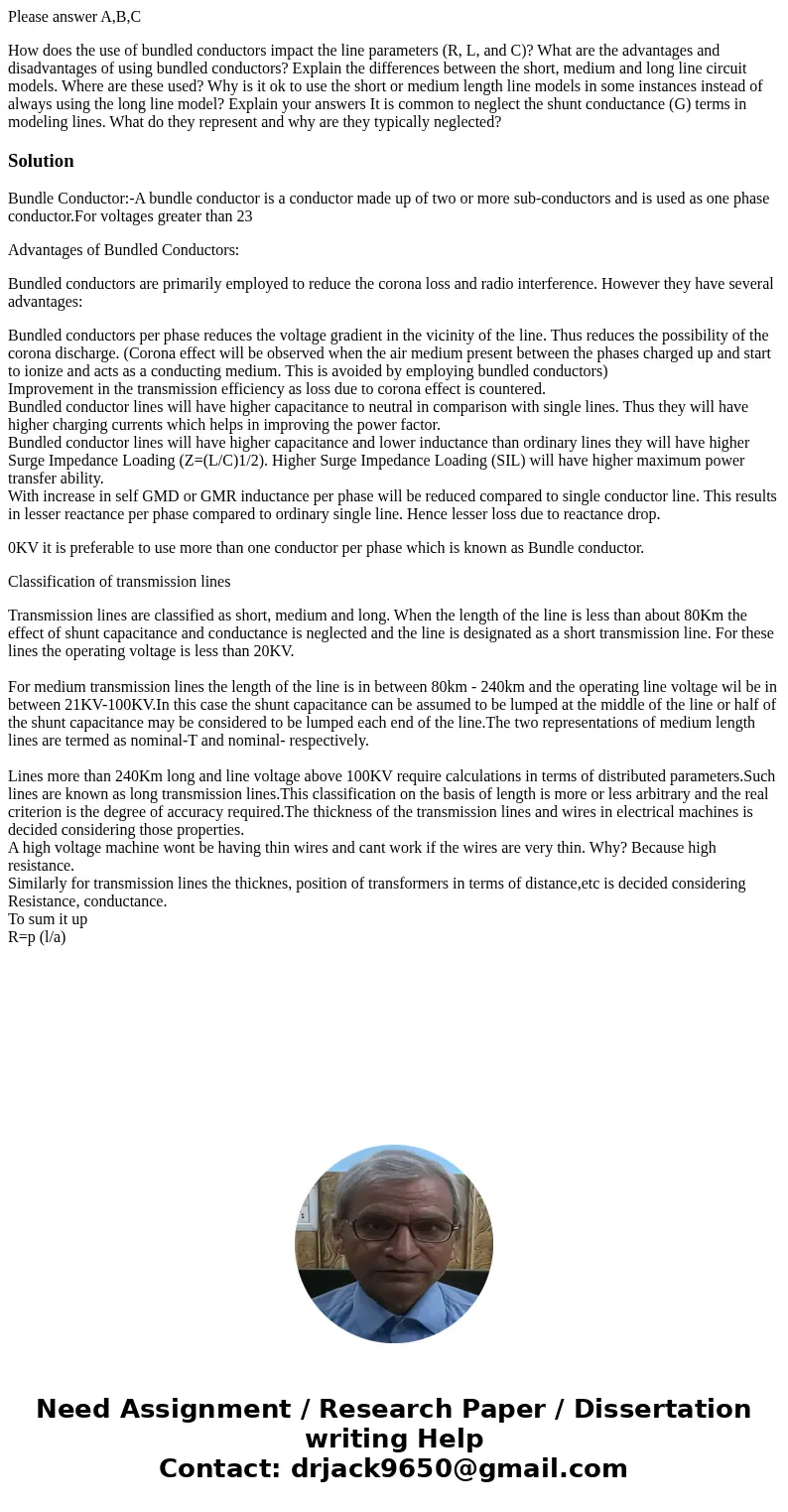Please answer ABC How does the use of bundled conductors imp
Please answer A,B,C
How does the use of bundled conductors impact the line parameters (R, L, and C)? What are the advantages and disadvantages of using bundled conductors? Explain the differences between the short, medium and long line circuit models. Where are these used? Why is it ok to use the short or medium length line models in some instances instead of always using the long line model? Explain your answers It is common to neglect the shunt conductance (G) terms in modeling lines. What do they represent and why are they typically neglected?Solution
Bundle Conductor:-A bundle conductor is a conductor made up of two or more sub-conductors and is used as one phase conductor.For voltages greater than 23
Advantages of Bundled Conductors:
Bundled conductors are primarily employed to reduce the corona loss and radio interference. However they have several advantages:
Bundled conductors per phase reduces the voltage gradient in the vicinity of the line. Thus reduces the possibility of the corona discharge. (Corona effect will be observed when the air medium present between the phases charged up and start to ionize and acts as a conducting medium. This is avoided by employing bundled conductors)
Improvement in the transmission efficiency as loss due to corona effect is countered.
Bundled conductor lines will have higher capacitance to neutral in comparison with single lines. Thus they will have higher charging currents which helps in improving the power factor.
Bundled conductor lines will have higher capacitance and lower inductance than ordinary lines they will have higher Surge Impedance Loading (Z=(L/C)1/2). Higher Surge Impedance Loading (SIL) will have higher maximum power transfer ability.
With increase in self GMD or GMR inductance per phase will be reduced compared to single conductor line. This results in lesser reactance per phase compared to ordinary single line. Hence lesser loss due to reactance drop.
0KV it is preferable to use more than one conductor per phase which is known as Bundle conductor.
Classification of transmission lines
Transmission lines are classified as short, medium and long. When the length of the line is less than about 80Km the effect of shunt capacitance and conductance is neglected and the line is designated as a short transmission line. For these lines the operating voltage is less than 20KV.
For medium transmission lines the length of the line is in between 80km - 240km and the operating line voltage wil be in between 21KV-100KV.In this case the shunt capacitance can be assumed to be lumped at the middle of the line or half of the shunt capacitance may be considered to be lumped each end of the line.The two representations of medium length lines are termed as nominal-T and nominal- respectively.
Lines more than 240Km long and line voltage above 100KV require calculations in terms of distributed parameters.Such lines are known as long transmission lines.This classification on the basis of length is more or less arbitrary and the real criterion is the degree of accuracy required.The thickness of the transmission lines and wires in electrical machines is decided considering those properties.
A high voltage machine wont be having thin wires and cant work if the wires are very thin. Why? Because high resistance.
Similarly for transmission lines the thicknes, position of transformers in terms of distance,etc is decided considering Resistance, conductance.
To sum it up
R=p (l/a)

 Homework Sourse
Homework Sourse